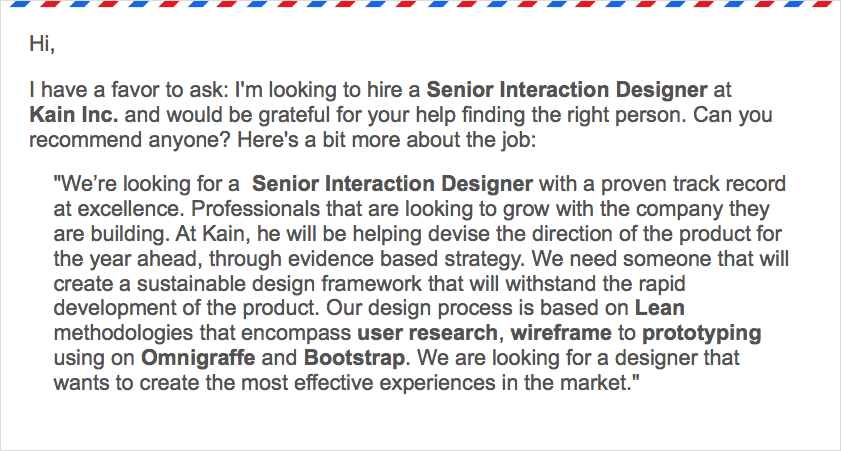Since joining Yesgraph as a designer, I’ve talked to a lot of companies about their hiring practices. I’m going to start sharing some of the insights gained from my design research here on the YesGraph blog.
The biggest problems I have seen with job descriptions is the context that they are written in. Too often, they are created in the process of opening the position filling out a form addressed to HR. This form, called a Req Form in most companies, ask the hiring manager to fill out a list of requirements to fill that job along with other administrative data like position, pay range, starting date. The content of this form is what eventually makes it into the job description.
Req forms have 2 purposes; process and guidance. What we have seen is that they are usually filled out by hiring managers, with varying degrees of dedication to the task. This req form is what hiring manager often receive as guidance on how to open a position and create a job description. After this form is submitted, the HR rep creates a job listing with this information and posts it everywhere in hopes of getting applicants.
What this doesn’t reflect is how people are actually getting hired. And I think that modeling your job description after a tweet instead of a form is a better option.
Job Descriptions are social:
Startups are a great subject to study when looking at hiring. They find themselves growing exponentially amidst a very competitive talent pool. By far, their most successful hiring method is referrals. If that is your strategy, then you need to optimize your process for sharing. Writing your job description with social media in mind is key.
By writing your job description with a social context in mind, you can easily insert it in conversation when requesting for a referral. You are freeing yourself from the need of an attachment, a link, or the need to be using a specific channel.
Your conversation is with applicants, not HR: (tweets are conversation starters)
If you structure your job description in the format of a form, it should be no surprise that it reads like a form. What we have seen is that warm introductions matter. The sooner you communicate that the process is a conversation between the hiring manager and the applicant, the more successful you will be.
If you are hiring designers, the job description is the first time you talk to them. Make sure you talk to them like a designer. Creative professionals are attracted to teams, not organizations.
Talk about a career, not a position to fill: (tweets can be inspirational)
If you are hiring this might mean a “day 1” decision to fill a position, but you need to be conscious that this is a career decision for the candidate. Which is why you should describe a career not a job position.

The all too common list of requirements does not inspire a career in your company. I would also argue that a lot of this info is largely redundant. There is a lot of information that you can imply in a job description by way a of a title. Requirements are usually flexible and job applicants are smart enough to self select. One of the few positive aspects for designers having so many different job titles is that it implies both experience and skills needed for the position. If I only have 2 years of experience I most likely will not be applying to a Creative Director role.
If I spend most of my day in photoshop, I probably won’t be applying for that Information Architect position.
Use Keywords like Hashtags:
If you are using any type of modern digital tool to share the position it will be searchable, and you need to optimize for it. Make it easy to find and easy for both humans and bots to parse. Job descriptions are one of the few places where it should be encouraged to use industry jargon freely.
Finally, everyone’s work environment is different. You might need to still create the requirement list for the purpose of internal process. But if this is the case, I would argue that Hiring Managers view the hiring process as a deeply social endeavor. It is important to be aware of when you are having a conversation and when you are entering data.



